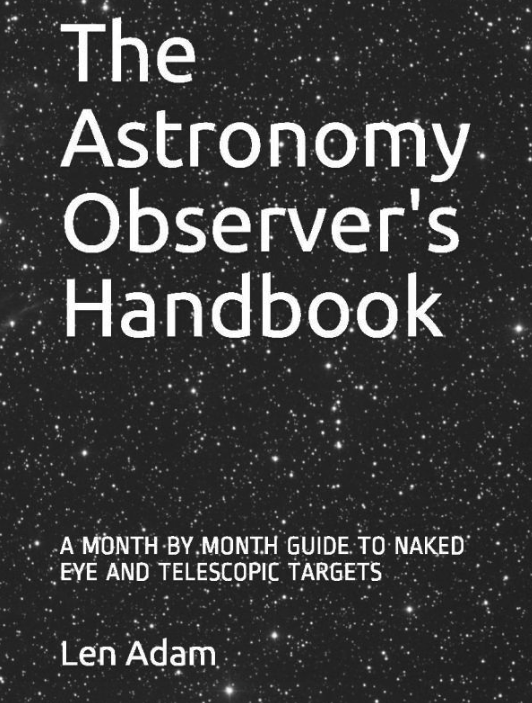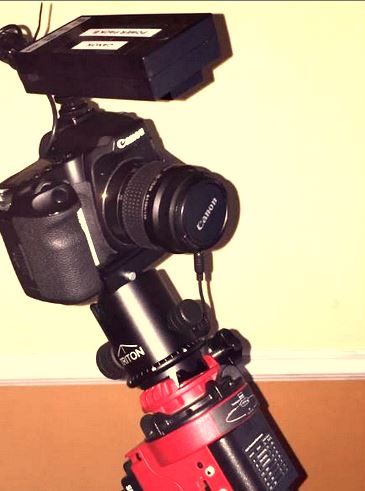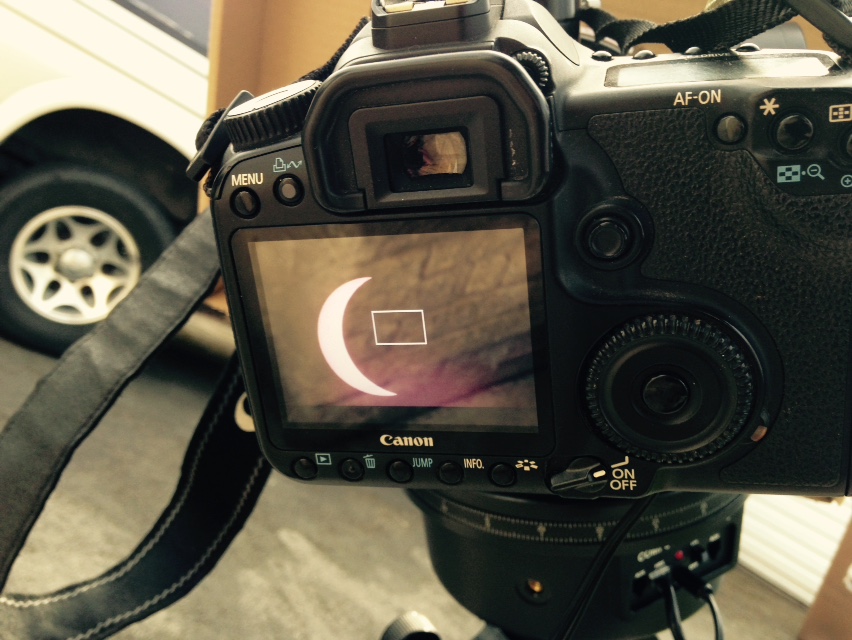Comet C/2017 O1 (ASASSN) in Camelopardalis 30th October 2017 07:11 U.T. imaged from New Mexico and California using 3 remote telescopes
 Sunday, October 29, 2017 at 8:07AM
Sunday, October 29, 2017 at 8:07AM I took images of C/2017 O1 (ASASSN) with three remote telescopes simultaneously. The image shows the wide angle image with the other two images as insets. The plate solution shows the actual image taken with T20 precisely superimposed on the SkyX Chart - Courtesy of Software Bisque.

The telescopes used were:(Data Courtesy of iTelescope.net)
Main image- T20 New Mexico OTA: Takahashi FSQ-ED
First power up of Paramount MyT with 8-inch RC Scope
 Saturday, October 28, 2017 at 4:16PM
Saturday, October 28, 2017 at 4:16PM I just powered up the MyT for the first time with the set up shown in the image. On switch on I pressed the button on the joystick twice - very similar to using my PME and the scope slewed to its home position. I set the rate to X1200 and used the joystick to adjust the mount back to the position shown. As you can see the scope is in the sitting room of the villa in Mojacar but I then managed to check the telescope for the first time by using a 2-inch eyepiece and pointed the scope at a distant target looking through the double glazing and the window bars.The distant target was across the Med on the other side of the bay to the north of Mojacar. I was able to bring the distant land mass to a focus ready for when I test it on the night sky - hopefully on Monday night.

Comet C/2017 O1 (ASASSN)
 Saturday, October 28, 2017 at 9:05AM
Saturday, October 28, 2017 at 9:05AM Within the constellation of Camelopardalis I know that Comet C/2017 O1 (ASASSN) is visible with a predicted magnitude of about 12, with an azimuth position of 30° 38' 36". As I have still not set up my equipment, I linked my laptop to a telescope in Nerpio which is 189 km away by road from my location in Mojacar - slightly west of North - and took an image of the comet. The image is a 10 minute exposure. The position of the comet was RA (2000) 04h 52m 56s and Dec (2000) +65° 14' 45". The altitude of the comet was +49° 58' 31". As a comparison the star UCAC4 777:18393 has a magnitude of 11.26. The exposure started at 23:11:53 Universal Time on 27th October 2017. (01:11:53 on 28th October 2017 Local Time in Spain.)
Waxing Moon and Mojacar Light Pollution makes for difficult observing
 Friday, October 27, 2017 at 8:28PM
Friday, October 27, 2017 at 8:28PM The Moon is waxing and is sitting in Capricornus in the south west with a phase of 49%. To the north the bright lights of Mojacar Playa and Garrucha form a dome of light extending high in the sky. Ursa Major, very low in the north west, with its plough shape parallel to the horizon has the crooked shape of its handle replicated by the shape of the foothils of the Sierra Cabrera mountain range below, behind which the buildings of Mojacar Pueblo are almost completely hidden. The summer triangle is still there as I stand looking west from the terrace of the villa. Looking through my birdspotting scope I manage to find Mizar and Alcor and that fainter 8th magnitude intermediate star Tycho 3850:257, forming a little triangle. The image below was taken with my Canon 40D in 2014. The chart below identifies Mizar and Alcor and the nearby star Alkaid.


Auriga overhead at 0600 Local Time in Mojacar Almeria Thursday 26th October 2017
 Thursday, October 26, 2017 at 6:36AM
Thursday, October 26, 2017 at 6:36AM I am currently in Mojacar in Almeria which is a lightpolluted location. However at 6 am local time this morning, in comparison with my usual base in Lancashire in the UK, the sky was ablaze with stars. I observed the stars from the terrace of a house which is only a few hundred yards from the Mediterranean Sea. Auriga was almost overhead and I could make out the M36,M37 and M38 clusters through my 8 X 30 binoculars.
 Messier 36 - Remote Image by LA
Messier 36 - Remote Image by LA
 Messier 37 - Remote Image by LA
Messier 37 - Remote Image by LA  Messier 38 - Remote Image by LA
Messier 38 - Remote Image by LA
Agnes Mary Clerke - Astronomy Historian
 Sunday, October 2, 2016 at 9:13AM
Sunday, October 2, 2016 at 9:13AM Read the article on Agnes Mary Clerke printed in the Society for the History of Astronomy journal "The Antiquarian Astronomer" by clicking here. It will load as a PDF.
The Crab Nebula from California - 30th September 2016
 Saturday, October 1, 2016 at 8:19AM
Saturday, October 1, 2016 at 8:19AM  M1 from T24 California 600second exposure
M1 from T24 California 600second exposure












